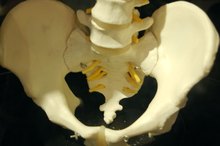What Are the Dangers of Extreme Sciatic Nerve Damage?
The sciatic nerve is located on the back of the leg and provides sensation on the thighs, the lower leg and the soles of the feet. Because the sciatic nerve is connected to and supplies the muscles on the knee and lower leg, extreme damage to the nerve can cause weakness in the knees, difficulty bending the knee, difficulty in bending the foot, and/or weakness in foot movements. It can also cause problems with reflexes, and the knee or leg may not respond properly when touched. Finally, patients may experience extreme pain or tingling as a result of sciatic nerve damage.
Causes of Sciatic Nerve Damage
Sciatic nerve damage may be caused by a number of factors including an injury (such as a pelvic fracture or other pelvic injury); a slipped disk; degenerative disk disease; spinal stenosis; or tumors.
Symptoms of Sciatic Nerve Damage
Causes of Nerve Pain in the Hip & Leg
Learn More
With damage to the sciatic nerve the patient may experience aches, tingling or burning in one or both legs. Pain may be local to one leg or to one side of the leg, hip, calf or soles of the feet, or pain may exist in both legs. When the damage to the sciatic nerve is extreme, patients may be unable to move their legs. When the nerve is damaged, pain may begin slowly and progressively worsen. Pain may also be heightened after a patient sits or stands, coughs, sneezes, laughs, bends or walks. The pain may also be worse at night.
Sciatica
Sciatica is a term used to refer to the symptoms that occur when the sciatic nerve is damaged. It is not a separate medical condition but is a general term for the numbness, pain, tingling or weakness experienced in one or both legs by patients who experience damage to the sciatic nerve.
Diagnosis
4 Symptoms of Leg Weakness You Should Learn to Recognize
Learn More
Typically, sciatic nerve damage is diagnosed by an examination of the legs. The doctor may diagnose sciatic nerve damage in patients who experience weak knees, difficulty bending or moving the feet, or abnormal reflexes. Tests may also include X-rays or MRIs to discover the specific cause of the sciatic nerve damage.
Treatment
Typically, if the sciatic nerve damage was sudden and the symptoms are minimal, treatment is conservative and the nerve damage may resolve itself without intervention. However, if the nerve damage is extreme or has a specific cause, treatment may require surgical removal of lesions or disks. Injections may also be recommended to reduce inflammation around the injured sciatic nerve.
Over-the-counter and prescription medications can minimize the pain of the symptoms in the cases of severe nerve damage. These medications range from analgesics (pain relievers) to tricyclic antidepressants (which are also used to treat pain) or steroids.
Finally, physical therapy and/or modified movement using braces, special shoes, or splints may help to control symptoms and compensate for loss of motion caused by extreme sciatic nerve damage.
Long-Term Dangers of Sciatic Nerve Damage
If the sciatic nerve is severely injured or lacerated, full recovery may not be possible or may be limited. The pain caused by the nerve injury may be severe and persistent for a long period of time. Other possible complications to severe or untreatable sciatic nerve damage include a loss of motion or sensation in the leg and/or recurrent injury to the leg.









